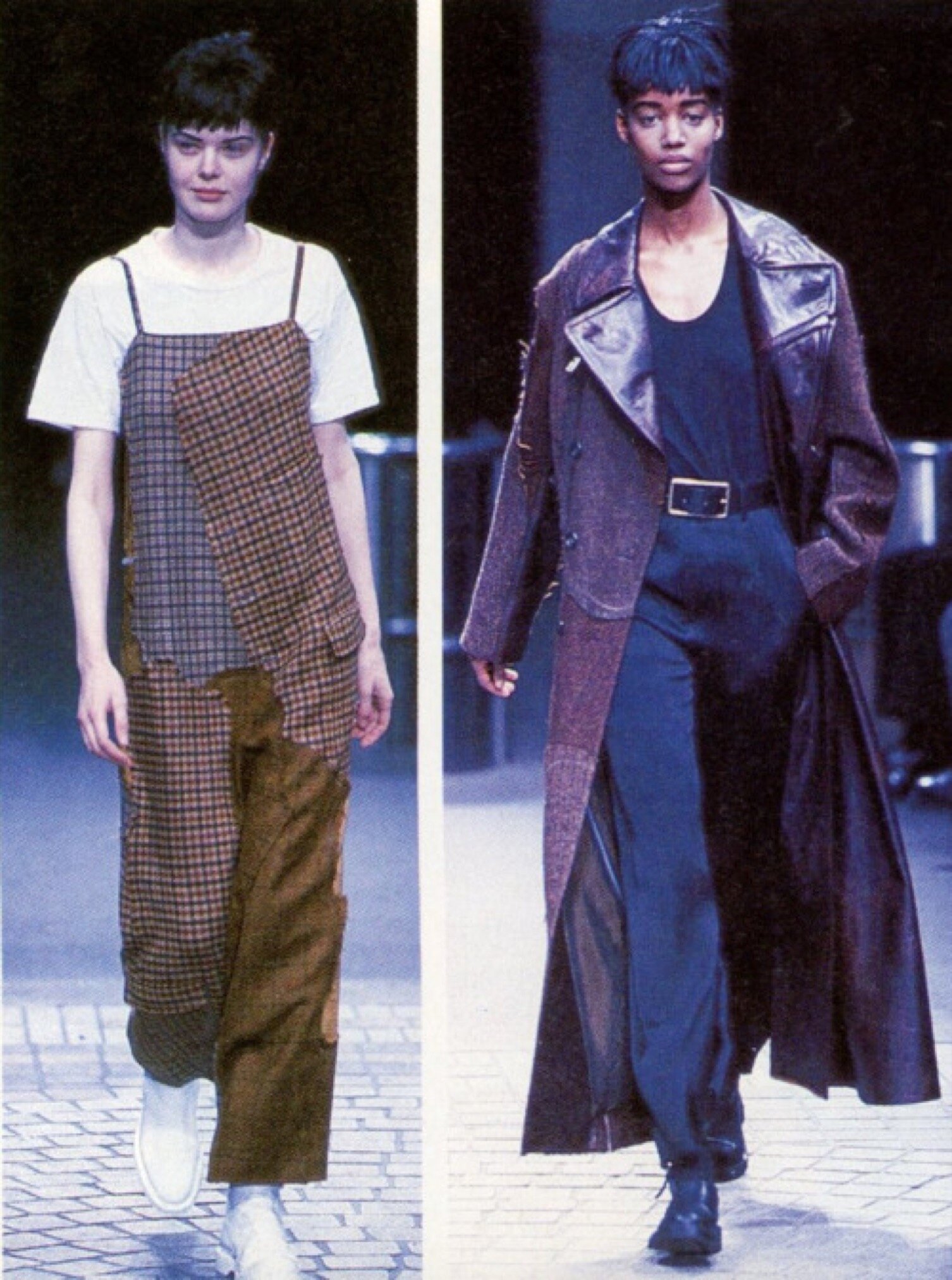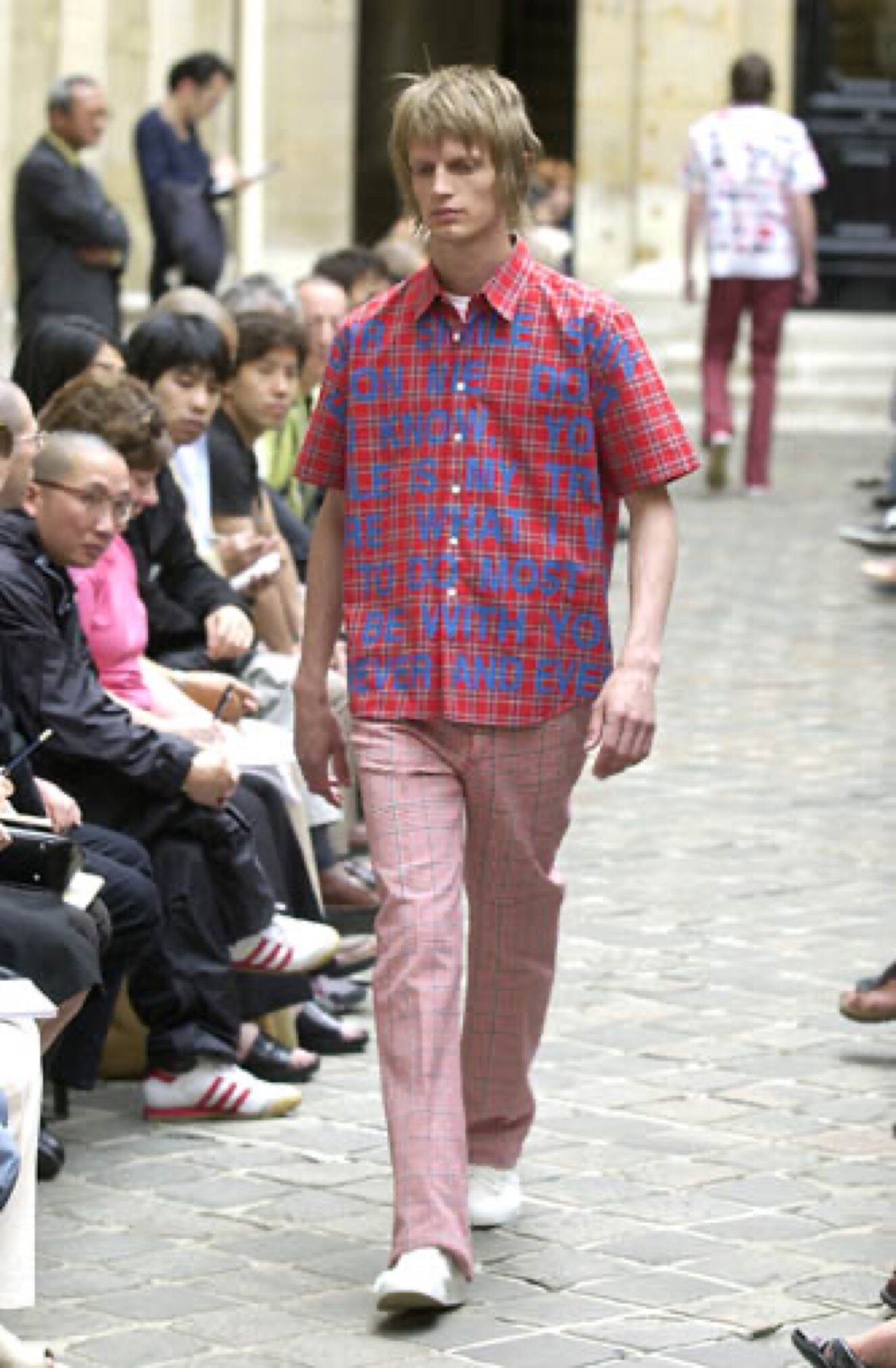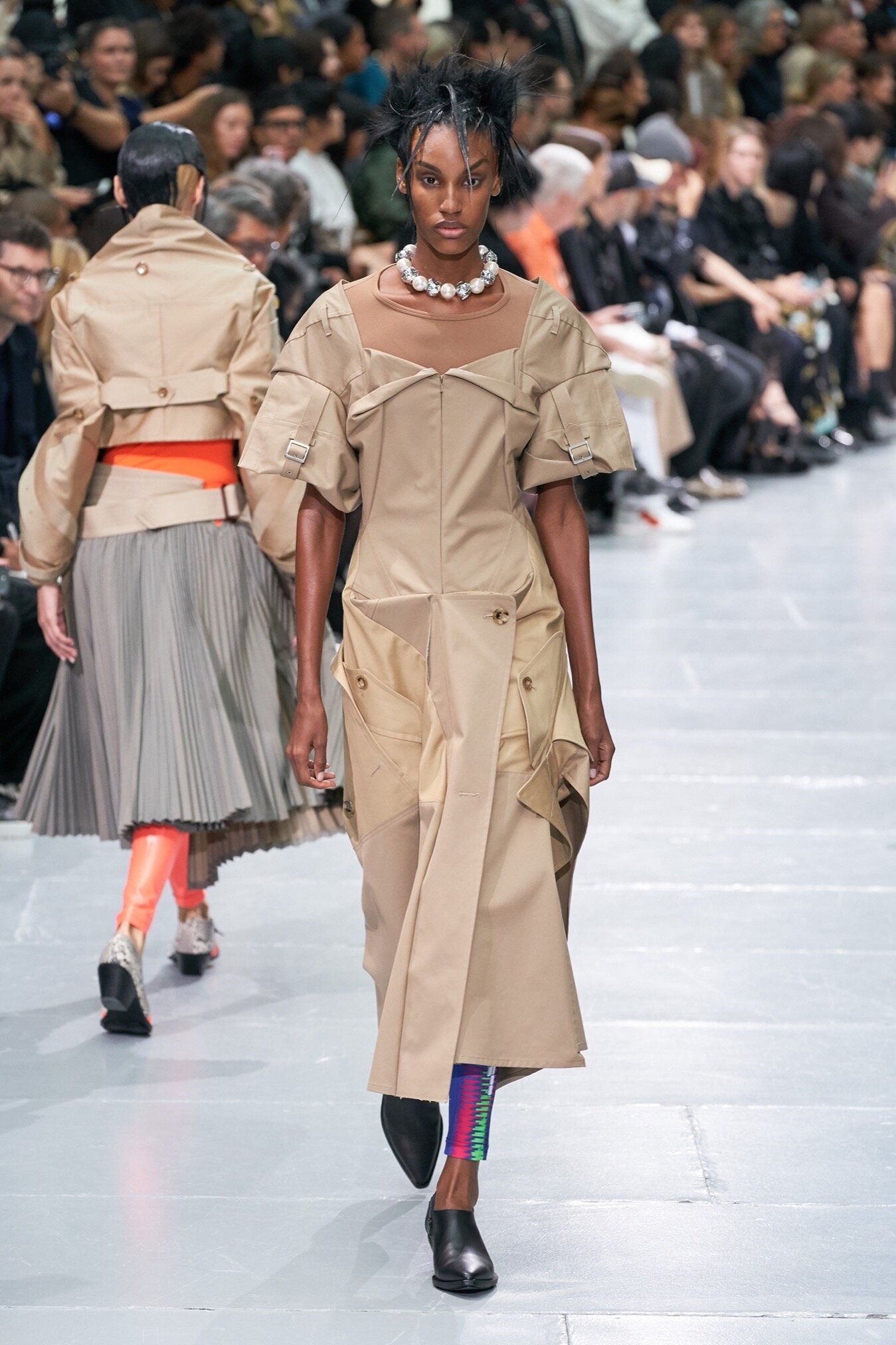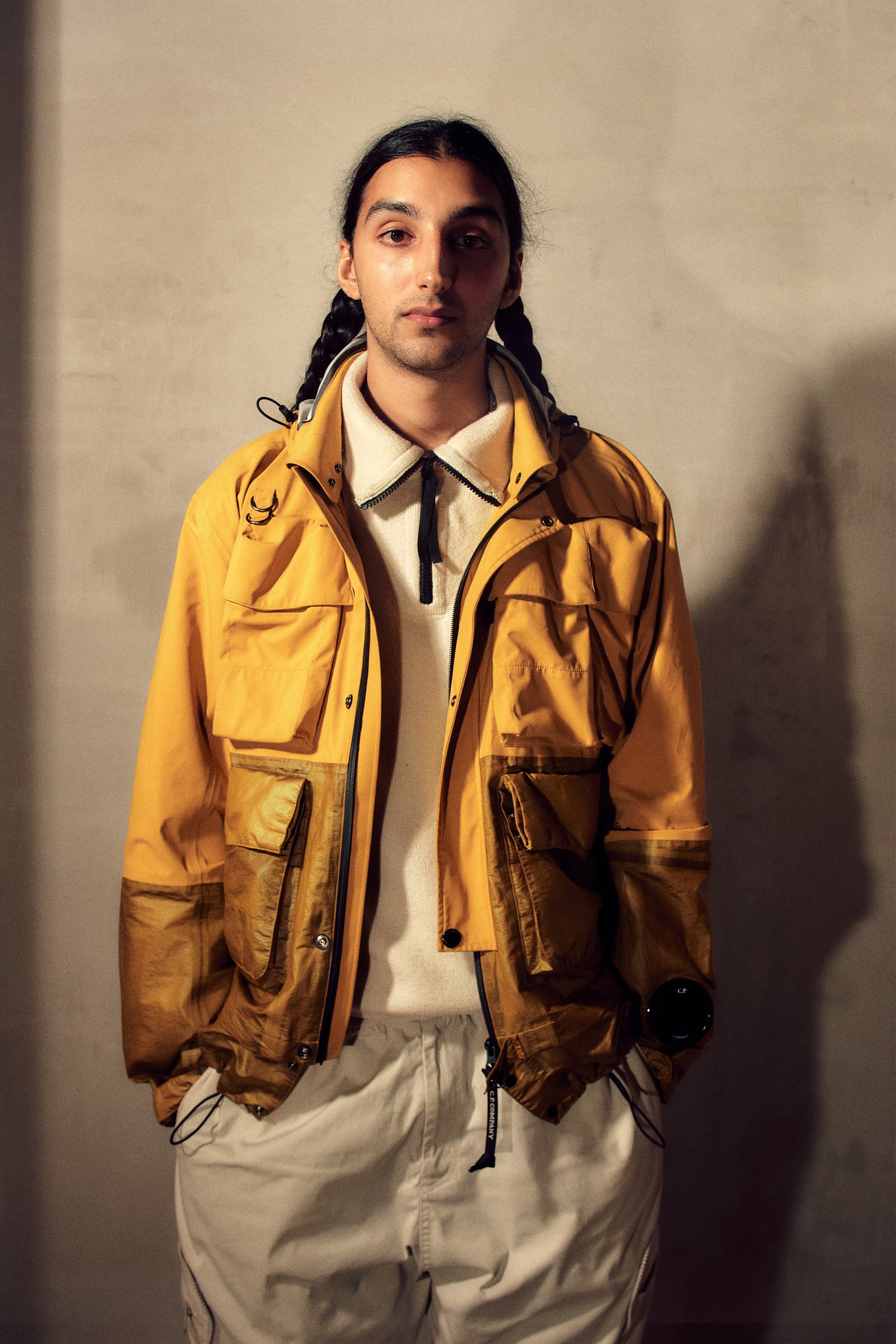A MYTH AND LEGEND, AN INTRODUCTION TO THE WONDER THAT IS JUNYA WATANABE

This is not an interview, nor is this an advertisement.
This is an open piece of written exploration of the omnipotence that Junya Watanabe has cemented for himself in the world of fashion since his professional working capacity began; In Tokyo, 1984. Whilst being a juggernaut in the fashion industry, revered for challenging staple designs, silhouettes and body feasible adornments, he remains one of, if not THE most enigmatic designer producing regular collections today. The interviews he has given or had dictated and published can be counted on one pair of hands.
His public appearances can be counted on the same pair of hands, albeit in the early days he would rarely take the accustomed bow following the last model to walk the catwalk. When giving details on his catwalk shows prior to the event he often uses single words or small combinations affording the vaguest and widest scope of wonder from the lucky numbers that find themselves in Paris on these monumental days. What will they be seeing? None present will know until the models file down the runway under the specially constructed Watanabe vision. Four times a year.
Noted in two pieces written about him, his mother’s “made-to-order” store could be a main stimulus for his interests originally; with Cardin and Miyake being his two notable attractions in designer - both experimenting with cutting edge fabrics, construction processes and design practices. Junya Watanabe graduates Bunka Fashion College and is drafted into the Comme des Garcons universe by Rei Kawakubo to be a pattern cutter and pattern maker across labels.
Working on the female line, Tricot, as a Chief Designer from 1987 he went to work on Homme as the Chief Designer and then subsequently set up his own namesake label in 1992 under the umbrella of CDG LTD; Junya Watanabe for Comme des Garcons, debuting in Tokyo for Fall Winter of 1992 and then the regularshowing in Paris began in 1993; with his namesake line for a male demographic; Junya Watanabe MAN for Comme des Garcons debuting Spring Summer 2002 in Paris.
Dissimilar to other designers he himself handpicks the collaborator brands, items, companies and cultural reference that are seen to be peppered throughout his collections, albeit with his MAN line heading up branded and notable side of collaboration strongly; working with companies for their textiles, for their cultural heritage, their unique processes or for the finishing edges of sheer investment Watanabe has in rounding his works together under an idea. LEVI’S for example has been working with and providing Watanabe with denim as well as his own base models since MAN started. Brands like Carhartt, Gore-Tex and New Balance can be seen as regular collection collaborators to note a few.
Working in a scientific and methodical way, Watanabe demonstrates his abnormality to his peers by choosing to foreground a focus on the reality and actuality of design and content. The Bauhaus masters asserted a design philosophy of 'form follows function' which centralized within their art and movement a focus to not be drawn away by worrying about a dogmatic philosophy that would file all work as external representation by interpretation. In retrospective jump from this, Junya's designs are like a turbulent slalom that shakes and bumps his designs and processes until they are far from where he would ever want to be; fitting in?
His position as a high modernist, or someone who rejects the appealing preferential and prejudicial elements of designs and constructions; allows him to create in a way that draws out the wearer or the viewers reason to question their own preconceived ideas of what it is to adorn or dress, in this modern world. It’s noted that he actively tries to keep his purity of design by taking little-to-no interest in works by fellow designers across the globe; using his own existence, interests and understandings to inform his vision.
When viewing each of his seasons and releases on a comparable field with other designers of that same season there is almost next to no correlation in theme or physical subject matter; Watanabe has a confidence in his output that carries through to the actuality of the adornment of said items. Whether he is working on the reconstruction of a pre-existing staple design, the experimentation of fabrics and textiles or even testing practices and methods that have not been utilized or appropriated before he focuses on the actual. Physical tessellation, geometrical working, three-dimensional and origami constructs are some of the finest examples of working within a specialist field outside of fashion to then translate back into design (Most variated display would be Fall Winter 2015).
Scientific and laboratory research style procedures followed to ensure items retain their integrity when moving from one area of art to the wearable side. Honeycomb is a shape and structure that has been utilized to provide volume and fluid movement yet density of structure, whilst allowing to take the shape of an ethereal or magical entity, a Will-O-Wisp (Spring Summer 2000).
In a 2002 TV documentary on Rei Kawakubo and Comme des Garcons, Watanabe was interviewed on screen and is quoted in translation as saying,
“Whatever you really want to do comes first, before trends. I always tell myself to do my best and create something new and strong. The final products show what you have achieved. No words can explain it. If the products don’t show anything, it is a failure. There is no special hidden secret. It just comes out from repetitive process of everyday work.”
This is the first concrete instance that Watanabe confirms and loosely explains a working ethos, albeit incredibly loose and vague in actual working detail, it in part would only reflect the character of the man himself. Enigmatic yet refined and precise. It’s a statement that even now still rings true; his MAN designs are obtuse in their difference of fundamental construction and exude overt self-gratification to the wearer, yet they can in most instances be described as the perfect item for whatever the function in question is.
Fishing shirts with such detail, specific and extra functionality that they are at match for the actual use, sole function brand equivalents. It can be noted that whilst a lot of collections have clear visual themes and stimuli, many items can be utilized across areas of wear or use. So in many ways, the utilitarianism of the designs he creates have abstractions of 20th constructivism within. The visible strapping, attachments, clipping, reinforced seams, panel-construction, layering, functional-detailing, metal, plastics and non-textile detail and elements and accompaniments; everything is made in a way for the easiest and most perfect wear. Allowing us to make vivid connection to the architectural elements he utilizes.
Whilst it may be argued by off-the-deep-endfashion aficionados that Watanabe’s physical design work does not grace thought or bearing to the world of haute-couture and the gravitas of industry it holds within a wider trickle down fashion world; he has never made clear his driven intentions of design motivation besides the actuality of him working as designer to design. It is his hard working day job. Through viewing one can see there is a clear difference in his actual design motivations for his mainline Ladies and mainline MAN collections; so when also considering the ageing general understanding that it is popular for females to play with visceral style and image; whilst males are more likely to adorn within the comfort of their pre-understood tribes or ‘ways of dressing’, it is like most other brands, semi gender-binary.
Watanabe for a period also ran the line Junya Watanabe MAN PINK for Comme des Garcons that started in 2002 at the same time as MAN; a label that focused on translating men’s designs typically to a more female or feminine body type whilst incorporating actual designs for ladies such as dresses, skirts, corsets and more.
By nature, items sizing and fitting can be on the smaller or more fitted side if being worn out of demographic intention. With the seasonal speculation around what may or may not be seen each mainline show, it could be thought that Watanabe really does just love designing and has found his true calling in it; the cryptic one-word, or one-line teasers never leading the audience mind to what is ultimately displayed before them.
Almost like a renaissance artist working behind closed doors for extended periods in the fear their work would be seen and copied by lesser counterparts, only to reveal their latest under-wraps project to stun and wow the audience it’s targeting. Watanabe has found innate talent in the adaptation of traditionally valued and understood garments and styles whereby he can take singular or eclectic elements to run through his mental and physical deconstruction, reconstruction and design processes bringing a new outlook on styles people may be less familiar in wearing or less accepting in a general sense when considered in comparison to other iterations of the same style or image. Culturally pre-existing and understood themes have less focus on the originally connoted elements; the re-workings and creations draw more.
Regarded as one of the pioneers and most successful or famous Techno-Fashion designers, collections like the Fall Winter 1995 and the Spring Summer AND Fall Winter 1997 women’s collections display in design, an almost utopian vision of modern adornment; and ultimately the famed Spring Summer 2000 collection, with interactions of and the utilization of water as rain, changing models wearing multi-functional technologically advanced fabrics and designs; Watanabe focuses some attentions to the problem solving of the everyday issue and desire; some for innovations and the actual forwarding of the affordability’s taken advantage of in daily life.
Designs that aim to make one’s life easier and elevated, like being breathable or waterproof when needed, or when an action is being undertaken that requires specific detail, like climbing or motorsports. In a way Watanabe offers retrospective connotations to a Futurist vision of the world, with clothing that can work with the human body in modern ways; temperature regulations, auto-tension and weave flexibility, administering of chemical and compounds or health managements amongst many other things.
Usually confined to film or television costume, of a modern world with flying cars, alien contacts and superpower-like health and care abilities; Watanabe designed through a period which was perfect for the boom and undergo of change and experimentation he is so regarded for. In a way such design and garb can be seen as reference to historic dress, by setting oneself into the future thus looking to the present or to the actual future.
Similar yet dissimilar to the work of Thorogood or Chalayan in so far as Watanabe ultimately keeps the end product as actual wearable clothing in a relative sense of how people historically would adorn themselves. It isn’t practical to wear a dress than becomes a table when you take it off, it’s art design over fashion design. Things that may be or should be, are only pertained as ideas until they are physically played with and created by Watanabe. Reference in detail through development of process, specific item detail function and use help ensure a remarkable familiar yet drastically different outlook when viewed or worn.
In 2016 he developed, designed and released in incredibly limited quantities, a trench coat with solar-paneling installed to the front and back panels, with a power pack, wiring and the ability to charge devices on-the-go. We can only hope to see more inclusion of actual technology within items and pieces Watanabe produces; although dissimilar to I-Wear and Starlabs work in 1999-2000 with Walter Van Beirendonck, in its actual practical daily use yet still exploring the same ideas of functional ease and maximization of convenience to daily life.
With flourishes and nods-of-the-head to chicer eras, like modern grandeur elegance of the 1940s, covered with alternate materials, shapes, reconstructed skirt suits, frock coats, shaped veils, dresses, over-shirts and blouses; in the Fall Winter 1999 collection; providing a darker, moodier and abstract take on the typical dainty upper-class modern woman style. In a way the materials and design difference reflect the times of actual change in rights and acceptance of existence since the un-reworked style was conceived; the changes in rights, standards of adornment, expectance of mental or physical stability and state and societal position or role.
Abstraction is played with and favored in womenswear more so than the functionality and the wearability. He takes elements of methodical and research based practices like architecture, science, engineering and mathematics to work his way through countless non-working designs until the perfect or the purpose is reached. Weighted structuring and balance of movements, inter-panel or constructional interactions, change in naturally expected forces impacts on garment appearance, shape and movement to name a few things are clear indications of cross-field research and working. But as an enigmatic yet world-famous designer, he must find the time, ability and attraction to explore, research, meet others and travel to truly widen and refine his actual skillset and abilities.
His Spring Summer 2015 MAN collection focuses on the use of denims and the understanding of Boro and patch working, dyeing and overdyeing amongst other traditional or time testament Japanese textile practices. Panelling on items to infer the ideas of a hard-working and hard wearing man, with stitch work and the use of many indigos reinforcing the practical work nature of the country and textile. The patterning used not only harks back and pays homage to the highest of society, of which Japan was known for to the West being a closed nation; but it seems to want to amalgamate all areas of Japanese life and all types of the Japanese person. A collection that truly praises his home country and its history, Japan.
It is unclear what truly underpins Watanabe’s processes; could it be the lifelong interest and passion within other fields that he translates into his own working field? Could it be the sheer fact of working environment itself, that he works under Comme des Garcons and by that fact has status and power, and can work as he pleases? It is just his job after all. One thing that is clear is that in part, Watanabe’s work and design is a byproduct of a super-boom in technological and societal understandings and outlooks that revolutionized the ways in which people lived their day-to-day existences.
The designs could be seen as a way to almost supercharge living nostalgia by offering iconic (semi-)recognizable pieces and designs that remove the wearer from a sense of normality by foregrounding how much better, how much more practical, elegant, ultimately different things can be whilst still keeping a sense of authenticity. You want to look like a mid-late 20thcentury alpine skier? An American businessman? A sports loving workman? A lady of the manor? A ballerina? A biker? All of these can be done.
Whilst experimenting innately with design and creation, he still manages to retain a level of recognition, understanding and palatability; offering things that are within the physical comprehensions and tastes of the audience that are so in love with the content produced. The ease of changing wearable styles is one of the traits Watanabe has tuned so perfectly. Even though many pieces seem unwearable for everyday adornment; it is merely in the outward appearance that lays the foundation for such thought. In hand even some items may be confusing or misleading as to how they are actually put on, but once adorned the fit, movement, weights and shapes are always perfect for the specific piece in question.
You wouldn’t exactly go out in something made of silk, organza and tissue in the rain and wind but for function and purpose the items have more consideration to how they interact with the body than many other of his design peers. Misconceptions that Japanese designer clothing always runs smaller and is ill fitting for people in the west is absurd and widely held, much to the dismay of the audience who believes it and excludes themselves from buying into such design. There are pieces from all seasons of the mainline women’s label that can fit and look exemplary on the male body for example, regardless of supposed size or gendering; if it fits, it fits. Ultimately the consumers know how they interact with the designer and as such more often than not, very specific collections and items can be seen far more frequently both being worn or for sale, than items of collections less covered by modern, hype driven media.
In essence, Junya Watanabe is a master in his field of work who from display of enigmatic behaviors of definition between working life and personal life, demonstrates that not only should one define one’s life; but they should seek to define their existence and hone their focus on the instant at hand. Whether Junya is exploring techniques of architectural conversion, physics of design and form or configuring the key components of a working garment, he is working; on his brand, on his craft, on his knowledge. And that really helps keep him out of the light.
About the author:
Rory Cole is a Uk-based Japanese Design Archivist, Fashion Designer and Charity Man; collecting Junya Watanabe, Issey Miyake, Comme des Garcons and Yohji Yamamoto, amongst other designers like Final Home and Kansai Yamamoto. SABUKARU be yet another string to his bow having content with other large international publications.



































